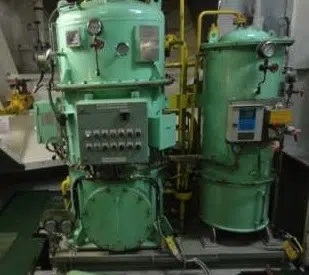#52 Ten Maintenance Tips for Oily Water Separators (OWS) Every Ship Engineer Should Be Aware Of
Every ship engineer understands the significance of the oily water separator (OWS) and may have heard stories of legal actions taken against seafarers who attempted to tamper with or bypass the OWS automation system.
The primary reason for tampering with the oily water separator often stems from a decrease in system performance. Beyond the common issue of filter clogging due to continuous usage, various other factors can contribute to this performance decline.
This article delves into several critical points that engineers operating oily water separators, particularly the coalesce filter type, may overlook. These insights aim to ensure the efficient performance of OWS systems used on board ships:
1. Proper Usage: The separator is designed for separating a small quantity of oil from bilge water, not the other way around. If the mixture contains mostly water with a small quantity of oil, it's best not to pass it through the OWS. Instead, transfer it directly to a waste oil tank for shore disposal or incineration.
2. Viscosity Control: Using highly viscous oil for oily water separation can lead to filter clogs. It's crucial to maintain the oil's viscosity within 1000 mm²/s.
3. Discharge Carefully: Avoid abrupt discharges of water-oil mixtures from the separator, as this can cause separated oil to adhere to coalesces, rendering them inoperative. Ensure the separated oil is discharged outside the separator and clean the OWS internals with water.
4. Dust Filter Installation: When using OWS to discharge bilge mixtures containing dust and sand, consider that coalesce filters may struggle with these coarse materials. To preserve filter lifespan and OWS efficiency, it's advisable to install a dust filter in the OWS inlet line.
5. Probe Exchange for Troubleshooting: In many 15ppm OWS models, the oil level detecting probes in the 1st and 2nd stage chambers are identical. In case of trouble, exchanging these probes between the chambers can help quickly identify the source of the issue.
6. Heating Device Monitoring: If a heating device is present, ensure it's active during OWS operation and switched off before stopping the OWS. Overheating of coils should be monitored, as excessive separator temperatures can lead to the production of inflammable gases.
7. Protect Internal Coating: The OWS internals feature a tar epoxy coating that is inflammable. Avoid exposing it to fire, welding, or excessive heat, as it can damage the coating and make the OWS susceptible to corrosion.
8. Maintain Water Level: Before supplying bilge mixtures, ensure the separator is initially filled with seawater. This practice extends filter life and preserves separator efficiency.
9. Prevent Leakage: Implement measures to prevent water leakage due to the siphon effect, which can allow oil to flow into the secondary chamber, affecting treatment capability and clogging the 2nd stage filters.
10. Effluent Monitoring: Regularly check the effluent to assess separator performance. If the effluent is found to be contaminated, stop the separator immediately and take corrective actions.
Operational staff responsible for OWS should possess a comprehensive understanding of the system, its design, piping arrangement, and operational procedures. Among all on board machinery systems, OWS holds high priority due to stringent environmental regulations. Therefore, ship personnel must maintain this equipment in optimal condition.



Comments
Post a Comment